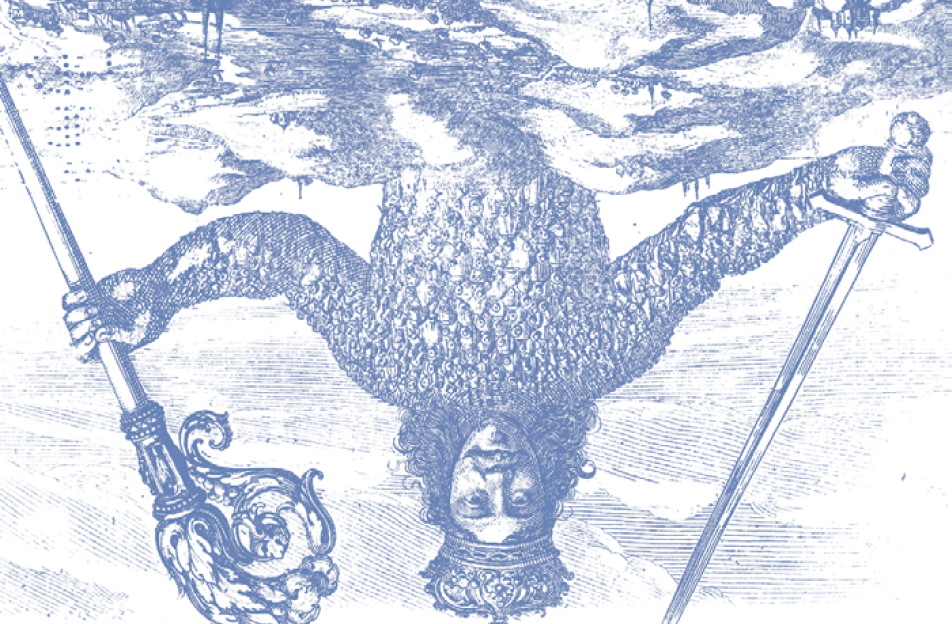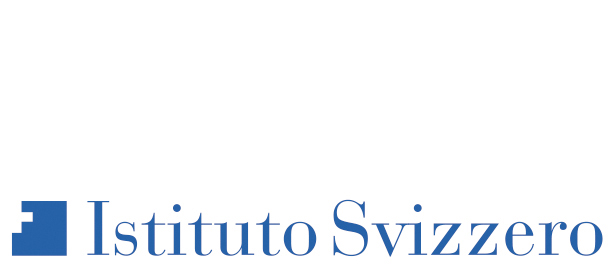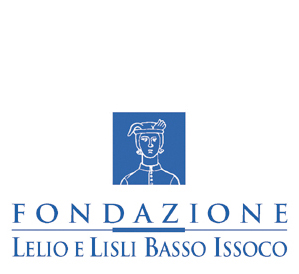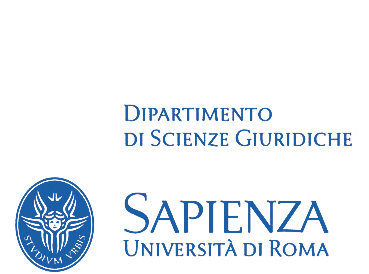
Abraham Bosse, frontispiece of «Leviathan» by Thomas Hobbes, 1651
A path of research in the city of Rome
Today’s educational, cultural and artistic institutions face the challenge of radically rethinking their own physical and disciplinary boundaries. The crisis of the last few years has demonstrated the importance of the production of space. Unlike its depiction on the part of some as smooth and crossed only by flows, global space appears to be segmented, fragmented, continuously reassembled: special economic zones, new enclaves, unprecedented institutional configurations, transnational lines of the production of knowledge. This profound transformation has impacted not only physical space, but also the meaning and function historically attributed to cognitive processes and to the organization of power on a global scale. Space no longer presents itself as a premise, an a priori or a container. On a strictly legal level, it is no longer a representative scheme or a mere field of operation of government regulation. Space takes on a productive function or, more precisely, it is the cause and effect of continuous production activity. Institutions, on all levels, are also impacted by this dynamic. Educational and artistic institutions have extended beyond the boundaries of the campus or the museum for some time now.
In the valorization of knowledge, what counts is not just what is produced, but its extension in space, and the space it creates by producing. Therefore the production of space becomes a decisive stake for research activity and critical theory itself. In other words, space is simultaneously an important object of research and one of its results. Starting with such considerations, different formal and informal institutions in the city of Rome have decided to join forces to give rise to a common path of research. Forming an alliance to produce, in the city, a space of the “between” of institutions, this path of research pursues a critical reassessment of the boundaries of a discipline, law, whilst deconstructing these boundaries which traditionally cordon off institutions and drive them towards a self-referential condition, separating their educational and research activity from the urban fabric, its contradictions and tensions. Investigating the spatial side of law and producing a new space of research, intertwining forms of knowledge and combining different public places, experimenting with different modes of encounter, ranging from the “face-to-face” encounter of two people to the round table. Beyond the public event, great attention goes into moments of in-depth study and the preparation of the various encounters: a workshop on law seen as one way, among others, to redesign the city in which we live.
The Boundaries of the Law. Institutions and antagonisms
The research starts with the aim of returning to the foundations of certain concepts and problematics that cross the conflicts of the present day, starting with the use made by social movements of the language and tools of law.
In recent years we have witnessed an unprecedented combination between the dimension of practices − social, political, artistic – and the juridical sphere. A combination that has produced a dual movement. On the one hand, the practices have attempted to reassign meaning to the legal field, demonstrating its potentially productive side: just consider the many experiences of struggle for the commons and the right to the city, where the ambition has been to imagine institutes and institutions ex novo, beyond the paradigm of property, and to imagine urban space as a place where it is possible to impose a democratic approach to processes of urbanization. On the other, the most aware part of juridical science, faced with these demands, has had to look beyond its disciplinary boundaries, leaving behind the arid perspective of dogmatic formalism.
For this reason, law today, or more precisely the use of law, represents a new, fertile path of research. The use made of law today is perceptibly different from that of several decades ago, not only due to the constituent and non-instrumental character taken on by practices, but also due to the profound transformations that have impacted the legal dimension. Rights can no longer be defined, as they were for about two centuries, through identification with a given institutional form, the State, and with an exclusive juridical form, the Law. The State seems to have lost that dual monopoly, of the production of law and of legitimate force, which made it sovereign. The hierarchy of sources of production of law seems to have been interrupted, broken down, fragmented, in both the upward and downward direction. In its place, we find a true heterarchy. These imposing transformations prompt us to return to certain key concepts of the political and juridical vocabulary of modernity: State, federalism, democracy, citizenship, constitution, government. Key concepts that already position themselves on a border zone, or on the impossibility to distinguish between an inside and an outside, of juridical science. To be grasped in all their intensity, they need a wider gaze capable of moving between political theory and history, urban geography and sociology, political economics and constitutional theory. The use of law, understood thus, can allow us to investigate the practices not just in their horizontal and extensive dimension, but also on the vertical plane, attempting to grasp the connection between production of subjectivity and dynamics of articulation of power.
This is why we set out to explore the boundaries of the law. Here too, the word boundary takes on a dual meaning: physical and disciplinary boundaries. On the one hand, the spatial aspect of law will be a constant theme in the research. Just consider federalism, seen as a specific mode of reorganization of political and juridical space, capable of challenging the inside and the outside of sovereignty. Or citizenship, now subjected to the tension between its intrinsic universalist vocation and the wrinkles introduced by devices of population control (European citizenship, in this sense, is a very appropriate example).
Or consider physical boundaries that gradually lose the character of being “fixed” that connected them to the territory of the Nation-State, and become mobile, modular, flexible (again Europe is a paradigmatic example, where the external limes does not coincide with the borders of the member states). After all, it has precisely been social movements that have brought out the “spatial question” as one of the decisive stakes of contemporary politics, with the occupation of squares, streets and parks, from Puerta del Sol to Taksim Square. Practices of struggle seen as the reclaiming of places in which to enact and experience democracy.
At the same time, as we have said, the work will also focus on the disciplinary boundaries of law. Here, the law can only be understood in its intrinsically political dimension, getting beyond the divisive formula typical of liberal juridical doctrine, between State and society. A formula that has permitted the reduction of politics inside the institutional boundaries of the State and the equivalence of social processes with state processes.
What happens now that the State no longer holds the monopoly on such processes? How is the role of constitutions and constitutionalism reconfigured in this context? Does the fragmentation of the juridical open up new possibilities of emancipation or, instead, is it a mere “regressive” element, useful only for the incessant action of financial capital? Questions for which at least partial answers can be formulated during the course of the work. If it is true that all we have known – institutions, representative systems, procedures of legitimation – is going through an irreversible crisis, it is also true that the present epoch has yet to find the suitable political forms to respond to this change. The research therefore becomes an effort of political imagination.
The promoters
Istituto Svizzero di Roma
Since its foundation, the Istituto Svizzero in Rome has been a destination for Swiss scholars and artists, and a reference point for the artistic and scientific activities of Switzerland in Italy. The Institute encourages dialogue and exchange with cultural operators present in Rome, Italy and beyond, thanks to various forms of participation that attract a constantly growing audience.
The distinctive feature of the Institute has always been the coexistence between persons from different artistic and academic backgrounds. As an outpost in the heart of Rome and the Mediterranean, today the Institute is involved in a process of adaptation of its activities to contemporary reality, in both institutional and historical-social terms.
Approaching the challenges of the present and the crisis that continues to produce its effects of transformation, the Institute experiments with artistic and research formats with the aim of formulating models that can be repeated, welcoming the opportunity to rethink the institution and to avoid continuing to repeat time-worn forms. An institution that attempts to transform and to set its own rules, starting from the results generated by its activities. Fertile interactions with the reticular Swiss system of art institutions, universities, advanced training schools, self-managed youth spaces, artists and researchers allow the Institute to foster exchange and dialogue in and beyond Rome, the age-old and untimely crucible of civilization.
Libera Università Metropolitana
The Libera Università Metropolitana (Free Metropolitan University), founded in 2005 in the “Atelier occupato ESC” in Rome, is an experiment in self-education and constituent conflict, within and against the transformations of the university. It crosses places of production of knowledge, and it is based on the free and independent production of knowledge beyond the boundaries between the university and the metropolis. A workshop composed of students, doctoral candidates, researchers, workers in the world of culture and art, college professors.
A place in which to again grant force to the non-functional, critical and experimental character of knowledge and its forms of production. A prototype of organization of cognitive work itself. A device that focuses on the sharing rather than the mere transmission of knowledge, in a constant attempt to build a common and conflictual vocabulary. The LUM project sets out to create knowledge and to share thought. The seminars, the readings-in-common and the research projects are the results of the encounter between different languages and accentuate the always hybrid, non-disciplinary character of knowledges as a practice of breakdown of epistemic boundaries. The configuration of groundbreaking research confronts its own inadequacy in an Europe that must be provincialized, looking for ongoing connections with related experiences to be able to produce a new map of living knowledge.
Fondazione Lelio e Lisli Basso-Issoco
Founded in 1974, with a large library and historical archive open to the public and also available online. The intense scientific activity is organized in research projects, training courses, seminars, conferences, publications and exhibitions, in the sectors of historical research and the culture of sources, political theory and law. The themes covered include: the process of constitutionalization of Europe, the relationship between globalization and universal rights, bioethics, cultural heritage. A large part of the activity of the foundation is its commitment on an international level in the promotion of research and conferences on the theme of human rights and organization of the sessions of the Permanent Peoples’ Tribunal. Fondazione Basso is based on the thinking of Lelio Basso, the 20th-century socialist theorist and politician, an original and heretical figure capable of mixing different but also authentic materials of Marxist thought and the tradition of thinking of the workers’ movement. Today the foundation has over 100,000 books and 5000 periodicals, including some very rare items, and conserves particularly precious original archives regarding the French Revolution, the First, Second and Third Internationals, the Paris Commune, 1848 in Europe, the Social Democratic movement in Germany, the Italian labor movement, the history of women.
Dipartimento di Scienze Giuridiche
The Department of Juridical Sciences was founded in 2004 by combining the historic institutes of the School of Jurisprudence. The Roman law school of “La Sapienza” was founded, at the same time as the university, in 1303 by Boniface VIII, who wanted to provide the city of Rome with a law school that would respect the supreme authority of the Church. This explains the initial accent on Canon Law, Civil Law and Roman Law. For a long period of time, the quality of the faculty and its cultural vivacity were joined by substantial closure against the most innovative trends, and a more or less latent distaste for the scientific developments of Humanism and juridical illuminism. With the annexing of Rome to the Kingdom of Italy in 1870 the situation radically changed, with a completely revised curriculum, adapting to the organization of the major European universities. Since then the Roman law school has emerged as one of the leading centers of cultural development. During the 20th century some of the greatest Italian jurists taught at the school. Today the scientific activity of the Department takes concrete form in many research projects, the organization of conferences, and a series of publications entitled «Collana del Dipartimento di Scienze Giuridiche.»
Centro Studi e iniziative per la Riforma dello Stato
(Center of Research and initiatives for the Reform of the State)
Founded in Rome in 1972 by the Italian Communist Party, the center’s first president was Umberto Terracini. It immediately stood out for its ability to stimulate debate between parties, institutions and scholars with different backgrounds and political cultures. Participants in the activities of the Center have included Pietro Ingrao, Ugo Spagnoli, Luigi Berlinguer, Luciano Violante, Sabino Cassese, Umberto Cerroni. Throughout the 1980s CRS was headed by Pietro Ingrao, who reinforced its activity, and in 1984 the center absorbed the magazine Democrazia e diritto. In 1986 CRS became an association, channeling the energies that in the institutions, the judiciary and the administrations sought to reflect on the theme of rights and democratic reform of institutions. In 2005, when Pietro Ingrao was ninety years old, CRS acquired his archives and, alongside the Association, created the Fondazione CRS-Archivio Ingrao. Today CRS, besides conducting studies and research in its traditional fields, regarding the political and institutional system, has widened its focus to geopolitics, local politics and economics, while keeping its fundamental characteristic intact: the use of a multidisciplinary approach to the study of these phenomena. Every year CRS produces a large number of publications, mostly with Ediesse, with which the center directs a variety of series of publications.





